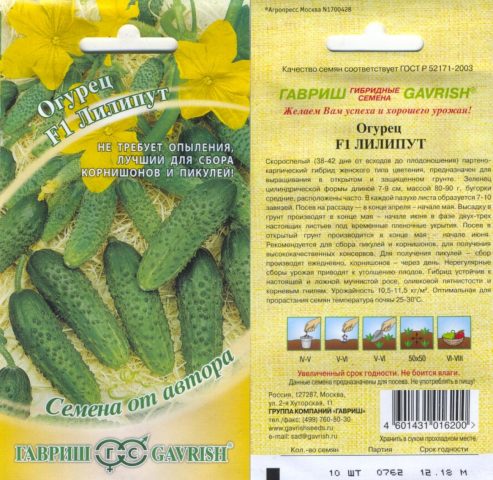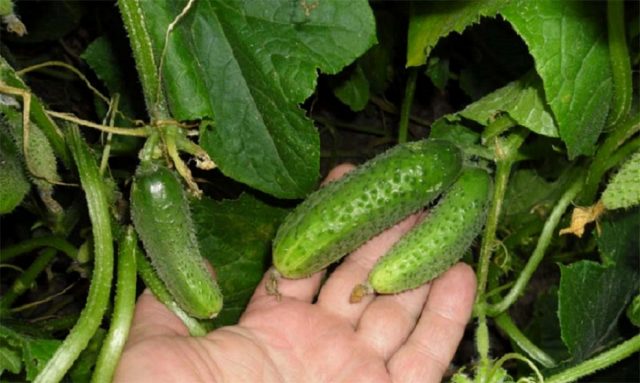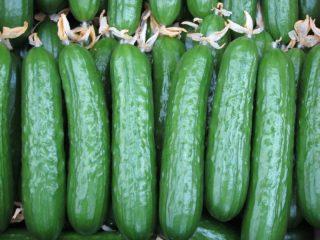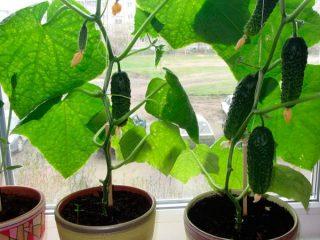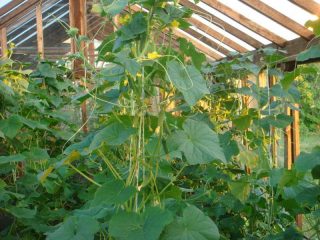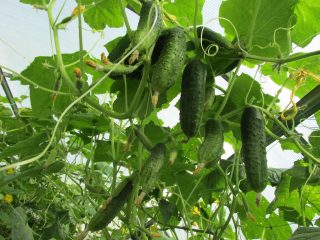Content
Cucumber Lilliput F1 is a hybrid of early ripening, bred by Russian specialists of the Gavrish company in 2007. The Lilliput F1 variety is distinguished by its high taste, versatility, high yield and resistance to many diseases.
Description of the variety of cucumbers Lilliput
Cucumbers of the Liliput F1 variety are distinguished by medium branching and a tendency to form lateral determinant shoots, the bush forms independently. The leaves are medium in size, ranging in color from green to dark green. The flowers are female, the ovaries are laid in the axils in bundles of 3-10 pcs. In the author's description, Lilliput cucumbers are listed as parthenocarpic, that is, they do not require pollination by insects. This solves many problems when growing cucumbers in greenhouses.
Fruit growth is slow, it is genetically inherent. If the cucumber is not removed from the lash in time, it retains its length within 7-9 cm and begins to slowly grow in breadth, does not turn yellow for a long time, but the growth of new ovaries is greatly inhibited.
Description of fruits
A short description of the variety and a photo of Lilliput F1 cucumbers can be found on the seed packaging. Zelentsy have an elongated cylindrical shape, sometimes growing in the form of a truncated cone. The skin of the cucumber Lilliput F1 is thin even in overgrown specimens, has a juicy green or dark green color, gradually lightening from the base to the top. Short white streaks can be seen on the surface of the peel. The cucumber is even, with many pimples, in the middle of which there are small whitish thorns. These small needles break off easily during collection.
The size of cucumbers Lilliput F1 is easy to guess from the name of the variety. The average specimen does not exceed 7-9 cm in length, 3 cm in diameter and 80-90 g in weight. Pickles are collected daily, gherkins - every other day. Zelentsy perfectly tolerate transportation and do not lose their presentation and taste for a long time.
Cucumbers Lilliput F1 are hard and crunchy, have an excellent delicate taste. They are good fresh, in salads and other cold appetizers. Lilliput F1 variety does not accumulate bitterness (the substance cucurbitacin is not produced) during sudden temperature changes and unstable weather conditions. Lilliput cucumbers are ideal for winter harvesting (pickling and pickling).
Main characteristics
The breeders Shamshina A.V., Shevkunov V.N., Portyankin A.N. were engaged in the work on creating the variety, it was they who, along with LLC Agrofirma Gavrish, were assigned the authorship. Lilliputian F1 has been listed in the State Register since 2008.
The variety is recommended for cultivation in protected ground (greenhouses, hotbeds) within the framework of personal subsidiary plots, however, it is successfully grown in open ground as well. Liliput F1 is zoned in the Northern, North-Western, Central, Central Black Earth, Middle Volga, Volga-Vyatka and North Caucasian regions.
Yield
Cucumbers Lilliput F1 give a stable harvest during prolonged rains, short drought and other unfavorable weather conditions.The growing season for Lilliput is short: 38-42 days pass from the first shoots to a mature cucumber. This hybrid has a high yield, 10-11 kg of cucumbers can be harvested from 1 m² per season.
The main factors that increase the yield of any kind of cucumber:
- good seed;
- fertile, fertilized soil;
- regular watering at the root;
- timely feeding;
- frequent collection of fruits.
Pest and disease resistance
Cucumbers Lilliput F1 have a high immunity to diseases such as:
- powdery mildew;
- downy mildew (downy mildew);
- olive spot (cladosporium);
- root rot.
In greenhouse conditions, cucumbers are often affected by whiteflies, spider mites, and melon aphids. If pests are found, it is necessary to immediately treat the bushes with an insecticide solution. For prevention purposes, it is necessary to promptly remove withered leaves and stems, as well as rotten fruits, observe crop rotation, regularly disinfect the greenhouse along with equipment, and follow all the basic rules of agricultural technology.
Pros and cons of the variety
The undoubted advantage of Lilliput cucumbers over other varieties are the following positive characteristics:
- early ripening (on average 40 days);
- high yield (up to 11 kg / m²);
- the possibility of growing in open ground and in greenhouses;
- excellent taste;
- lack of bitterness even under unfavorable growing conditions;
- versatility of use;
- excellent keeping quality and transportability;
- presentable appearance;
- resistance to major diseases;
- reluctance to barrel and yellowing with irregular collection of zelents.
The disadvantages of the Lilliput F1 cucumber variety are the relatively high cost of seeds and the inability to collect their own seed.
Growing rules
A rich harvest of cucumbers depends not only on the characteristics of the hybrid, laid down genetically, but also on the growing conditions of the crop. Positive reviews about Lilliput F1 cucumbers, supported by photos from the greenhouse, are the result of hard work and the correct approach to cultivation from the summer resident.
Sowing dates
Cucumbers of the Lilliput F1 variety can be sown directly on the beds and use the seedling method. Seeds are sown for seedlings in late April - early May. For this, shallow individual containers and purchased nutrient soil for vegetable crops are suitable. You can make a soil mixture yourself by combining garden soil with store soil in a 1: 1 ratio, and adding a little sand and vermiculite.
Cucumber seeds, without pretreatment, are placed in the soil to a depth of 1-1.5 cm, the containers are covered with polyethylene and placed in a warm place with a temperature of 20-22 ° C, when shoots appear, the shelter is removed. At home, seedlings of cucumbers are grown no more than 3 weeks, a further delay in transplanting will significantly reduce the yield.
When sowing Lilliput cucumbers in a greenhouse, you need to focus on the temperature inside the structure. It should be at least 15-18 ° C. In open ground, Lilliput cucumbers are sown in late May - early June.
Site selection and preparation of beds
For growing cucumbers of the Lilliput F1 variety, an open flat area or a small elevation is suitable. In the lowlands, cucumbers are more likely to rot. The place should be sunny, even the slightest shade can negatively affect the yield.
In the soil for cucumbers, compost, humus, sawdust and fallen leaves are embedded in advance. This will increase the fertility and structure of the soil. A small amount of complex mineral fertilizers is also applied to future cucumber beds.The reaction of the soil should be neutral or slightly acidic, the soil with a high acidity is unsuitable for growing the Lilliput F1 variety. Heavy clay soils, poorly permeable to moisture, will also not bring a decent harvest of cucumbers.
How to plant correctly
When planting cucumbers of the Liliput F1 variety, you need to adhere to the 50 * 50 cm scheme. Experienced agronomists advise not to plant bushes thicker than 3-4 plants per 1 m². The optimum depth for planting seeds in open ground is 4 cm.
In the seedling method, young cucumbers are pre-tempered by taking out containers with plantings to fresh air. 20-25 days after sowing cucumbers for seedlings, the bushes are determined to a permanent place. Peat pots can be placed directly in the soil, over time the peat will soften and allow the roots to grow. The plastic containers are carefully removed, tilting slightly and taking care not to damage the root system. The top layer of an earthen coma when planting in a garden should be at ground level. Cucumbers of the Lilliput F1 variety can be buried in cotyledon leaves if the seedlings are very elongated.
The timing of transplanting into the greenhouse differs depending on the material from which the shelter is made:
- from polycarbonate - from mid-April;
- made of polyethylene or glass - at the end of May.
The technique of planting cucumbers of the Liliput F1 variety in a greenhouse is similar to the procedure for open ground.
Follow-up care for cucumbers
The best option for maintaining the required soil moisture is drip irrigation. In the traditional way, at the root, cucumbers Lilliput F1 are watered as the soil dries, based on weather conditions. To reduce moisture evaporation, to reduce the need for regular loosening and weeding, the soil can be mulched with sawdust, needles, grass.
Until the time of flowering, cucumber bushes are fed with fertilizers with a high content of nitrogen and potassium. This will allow the cucumber to build up its green mass and prepare for the fruiting period. After the dissolution of the first flowers, Lilliput F1 is supported with phosphorus fertilizers, as well as a complex of trace elements.
Cucumber variety Lilliput F1 does not require formation by pinching, only with an excess of lateral branches that create a dense weave and interfere with the penetration of light, they are removed. As the lash grows, it must be tied to a trellis - this will increase air circulation and facilitate plant maintenance and harvesting.
Conclusion
Cucumber Lilliput F1 from Gavrish has won the hearts of many gardeners due to its simplicity in care, resistance to many diseases, excellent taste and high yield. Envy photos and positive reviews about Lilliput cucumbers only confirm the characteristics declared by the manufacturer.
